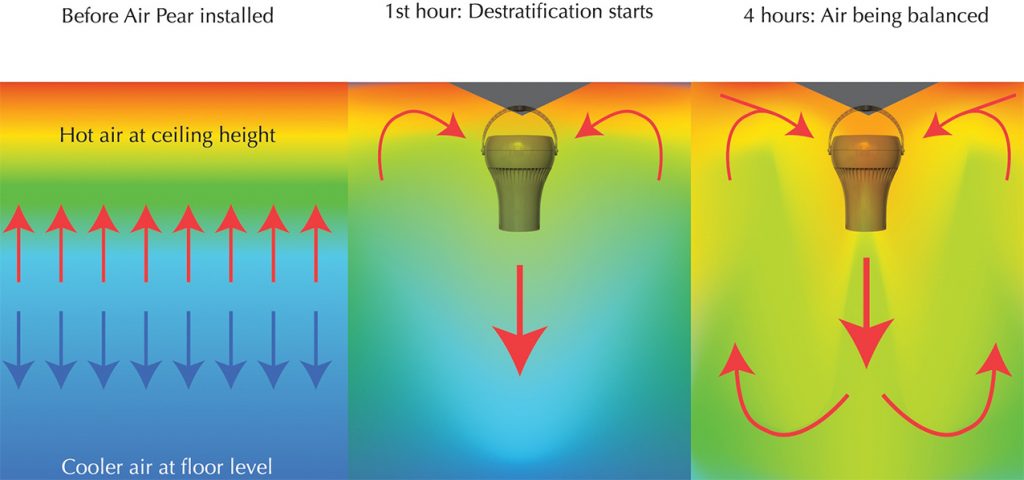Air Destratification
PROBLEM ADDRESSED
The movement of air is typically the most inefficient, complicated and energy consuming part of a HVAC (heating, ventilation and air-conditioning) system.
In addition to wasting energy, many hot and cold spots are generated within building spaces. This can often be uncomfortable for occupants.
In summer, cold air gets trapped under ceilings due to temperature layers that limit and slow the movement of cold air to the floor. In winter, hot air rises and gets trapped under the ceiling.
These occurrences require HVAC equipment to over-deliver cold air in summer and hot air in winter, in order to satisfy the demands of the thermostat.
SOLUTION
Air destratification, or thermal equalisation fans gently bring the air to the floor and circulate it around the space, equalising the temperature and dispersing pockets of hot and cold air. This satisfies the thermostat quicker and maintains the desired temperature in the building for longer after the HVAC has been turned off. The image below shows an example of the air movement generated.
Thermal comfort within the building is improved as temperature variations and hot and cold spots are removed.
The efficient movement of air is achieved by the fans, reducing the demands on more energy intensive HVAC equipment such as Air Handling Units, chillers and packaged units. As a result, significant energy savings can be achieved.
A quiet, energy efficient turbine fan produces an air-flow that is a gentle steady column. This is unlike the turbulence of most air flow systems.
A PHI kit can be added to mitigate mould, viruses, bacteria, VOC’s and odours.

